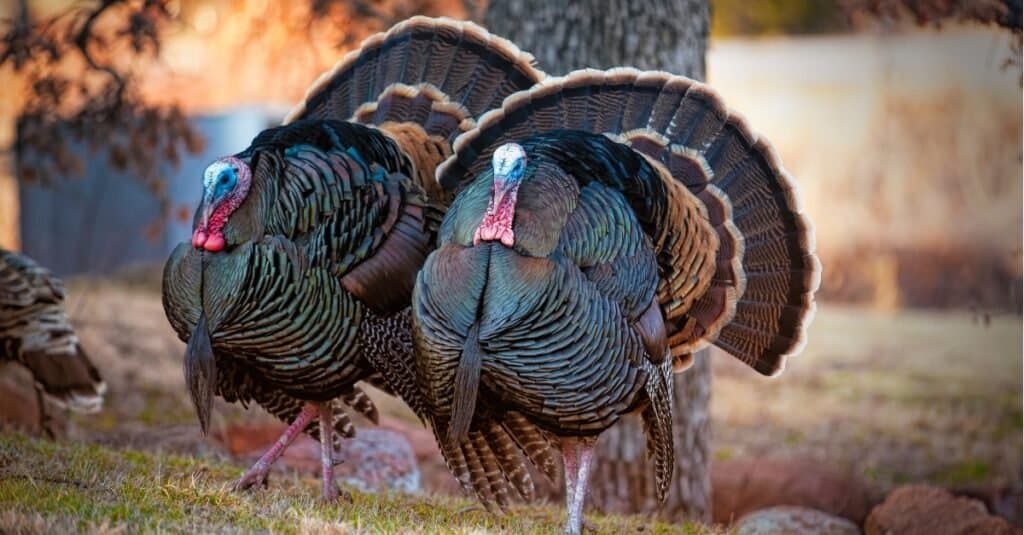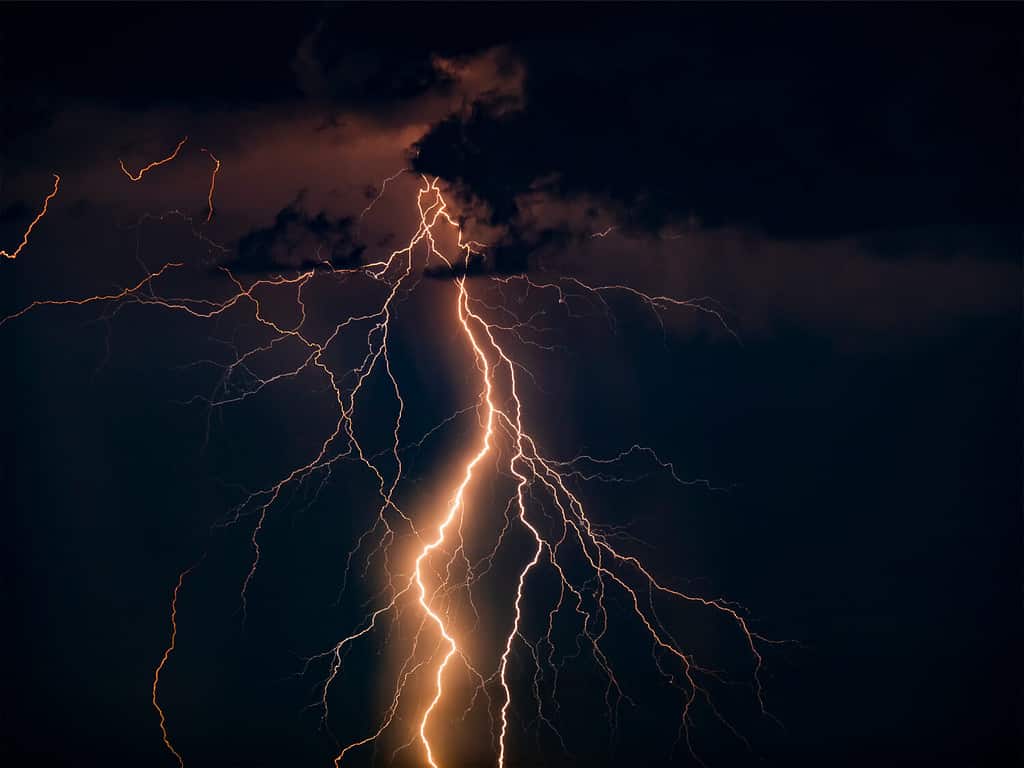Where turkeys go when it rains depends on the timing of the rainfall, how long it lasts, how hard it’s raining, and what the turkey hopes to get out of it. A rainy day is both advantageous and detrimental to the turkey’s day. Like most animals, there are ways for turkeys to take advantage of the weather.
If you’ve spent time watching a flock of chickens before, during, and after a rainstorm, you’ll come away with an idea of how turkeys act. So, there are several scenarios to consider here because a turkey is far more dynamic than most people realize. They aren’t like humans, running for cover every time there’s a little mist in the air.
Surprisingly (or, perhaps not so surprisingly, when you stop and think about it), the people who tend to know the most about turkey behavior are the ones who hunt them for food. A turkey hunter can tell you more about a turkey than a turkey could itself. If it could talk.
Where Turkeys Go When It Rains
Turkeys have a couple of mythological limitations when it rains. It’s thought that they can’t see as well, and they can’t hear as well. This would be highly problematic for turkeys since they could no longer detect predators as efficiently as before. However, they can see and hear predators better, thanks to the drenched tree line and grasses around them.
Moving through low-lying brush and grass that’s wet creates a wider, visual display, thanks to the grass, bush, and tree branches shedding water as a predator passes through. However, rain does irritate the big gobblers because they can’t run around, impressing females. When a gobbler’s feathers are drenched, the presentation is too much of a failure to bother.
When It Rains At Dawn

Turkeys hanging out in better weather.
©iStock.com/davidsdodd
Whether the downpour starts at dawn or crosses into dawn, turkeys tend to sit right where they are. If they’ve already established a nice place to roost for the evening, they aren’t liable to leave it. It’s a wait-and-see game at this point and turkeys are perfectly patient enough to play it.
For the most part, remaining in place means remaining in the tree line. Turkeys are very skittish throughout the hunting season, for readily apparent reasons. It’s a rare occasion to find one out in the open as the sun breaches the horizon. The good news is, if the rain stops soon after daybreak, they’ll rush the field for reasons we’ll discuss below.
Gobblers come out as well and are a little less wary than usual as they’re desperate to get at the hens. Being deprived for a few hours in the morning is devastating to gobblers.
Sudden Rain in the Middle of the Day
Turkeys act surprisingly during a sudden, afternoon thunderstorm. They’ll swarm to the open fields because that’s where the good feeding is. Heavy rain exposes all the delicious creepy crawlies that live just below the surface of the soil. It’s dinner time and turkeys don’t want to miss it. In other words, where turkeys go when it rains is where the food is.
This is an opportunity to gorge themselves like none other, especially if rainy days are few and far between. Places where the soil is readily accessible, without thick tufts of grass, leaves, or branches, are the best spots and where turkeys will congregate the most.
Thunderstorms

Gobblers gobble at the thunder, as if it’s a competition to see who can be the loudest.
©Azovsky/Shutterstock.com
Where do turkeys go when it rains, lightning is streaking across the sky, and thunder is shaking the earth and the surrounding trees? For the most part, right to the open fields where the worms and grubs are. Gobblers are especially hilarious in a thunderstorm. Wolves are often associated with howling at the moon. Well, turkeys (gobblers specifically) should be associated with gobbling at the thunder.
When thunder rips through the air after a particularly close lightning strike, gobblers take up the call, responding as loud and raucous as they can. It’s as if they have entered some environmental competition, and they are bound and determined to win. It’s one of those things you just have to see and experience for yourself.
For hunters, it’s the perfect giveaway and one of many reasons not to give up on the hunt over a little adverse weather.
Where Do Turkeys Go When It’s Windy?
Where turkeys go when it rains is a matter of timing and opportunity. However, in windy conditions, turkeys seek open areas surrounded by heavy vegetation—the bigger, the better. Small, open meadows, surrounded by sentinel trees are a perfect spot for turkeys dealing with a high wind.
Wide open areas, where turkeys tend to go when it rains, are off-limits, and they will typically avoid them at all costs.
Where Do Turkeys Go When It Snows?
Turkeys take cover in the snow and are far more reluctant to come out in the open. It’s essentially the opposite of a rainy day. It’s not really about the predator versus prey element, though turkeys are always aware of that. It’s more about dealing with their own, core temperature.
Snow tends to settle on turkey feathers, and they have to constantly shake it off while also walking in it. This will lower their internal body temperature, which a turkey instinctively knows to avoid. They tend to congregate wherever tree cover will shield them from the falling snow.
Where Do Turkeys Go In The Fog?

Life goes on for turkeys in foggy weather, albeit much more slowly.
©Belmin Mesanovic/Shutterstock.com
Where they go when it’s foggy is the same place turkeys go when it rains. The only difference is, they do it a lot slower. Fog is a little different from rain because it changes the dynamics of sound rather than just suppressing it. Turkeys tend to move around much slower, and they act far more skittish.
It will take them longer to come out from their roost. They’ll probably do everything they normally do, only at a snail’s pace.
Final Thoughts
Where turkeys go when it rains is straight to the open fields in the afternoons and mid-mornings. In the dawn hours, however, they take their time coming out to play. Hard rainstorms and thunderstorms don’t dissuade them in the afternoons either. If anything, it increases their activities in open fields.
While turkeys are oftentimes peculiar in their reactions, such as gobblers gobbling at the thunder, they have a fairly predictable nature. They love bright weather and days of sunshine and don’t necessarily hate a downpour. A heavy downpour, at least from a turkey’s point of view, is a juicy opportunity.
The photo featured at the top of this post is © Sean R. Stubben/Shutterstock.com
Thank you for reading! Have some feedback for us? Contact the AZ Animals editorial team.







